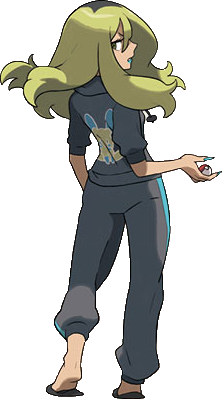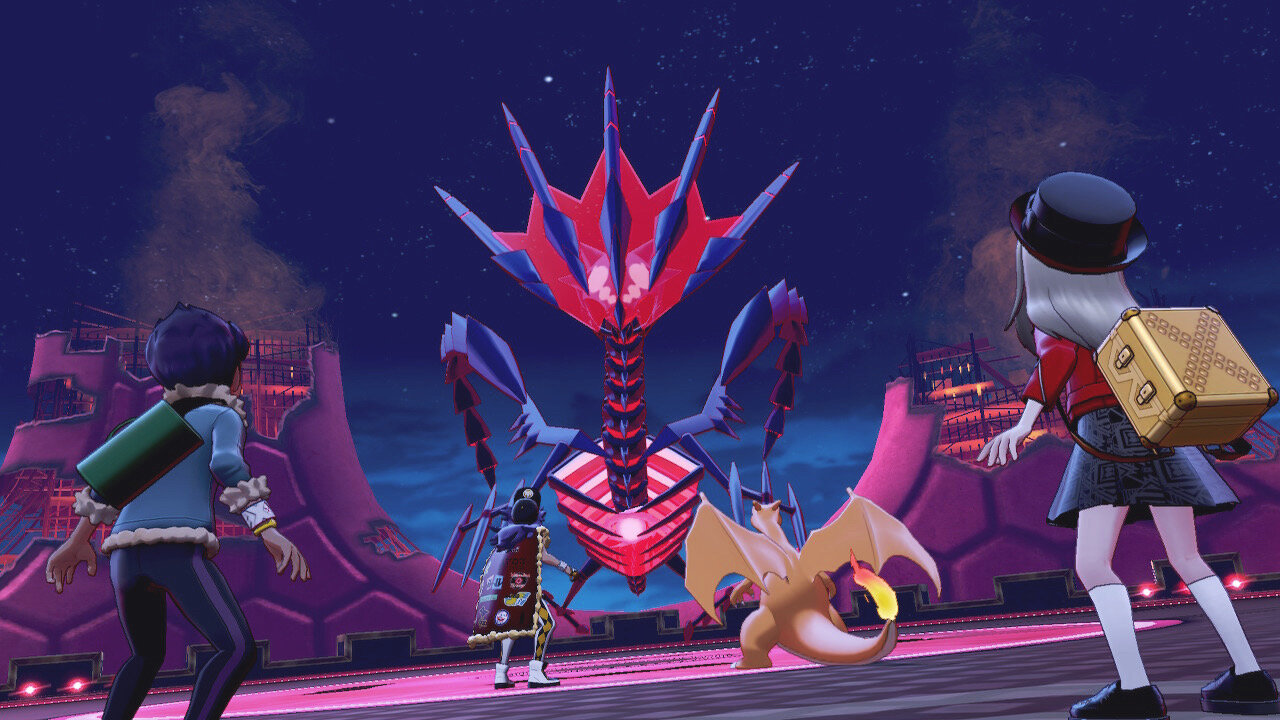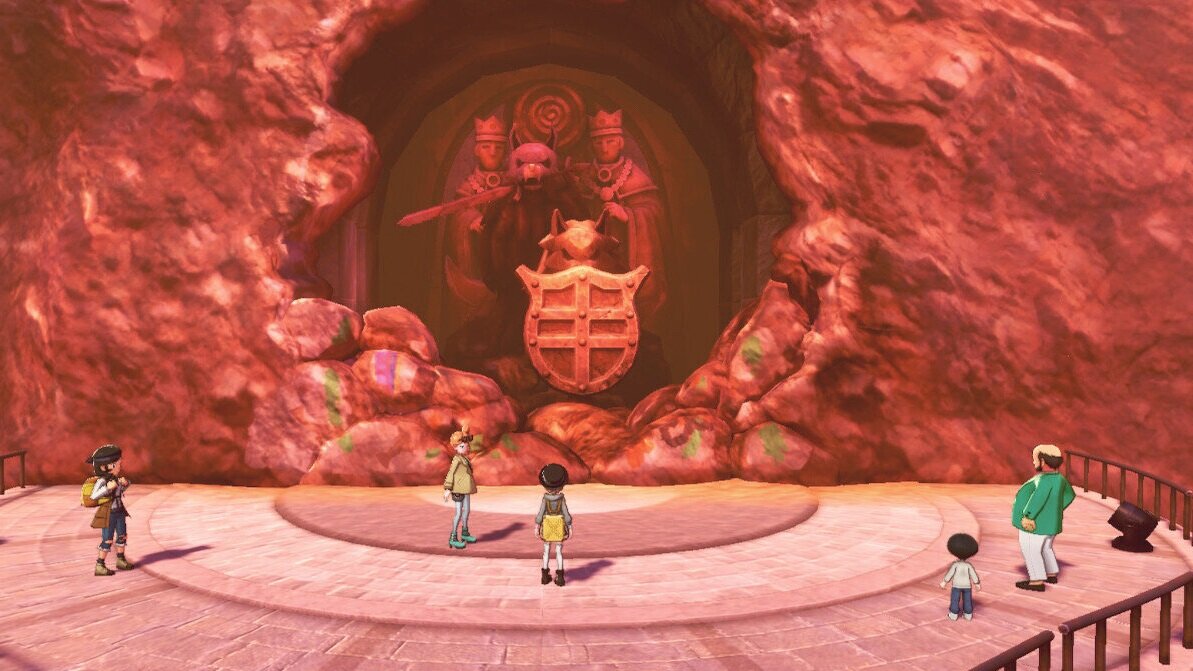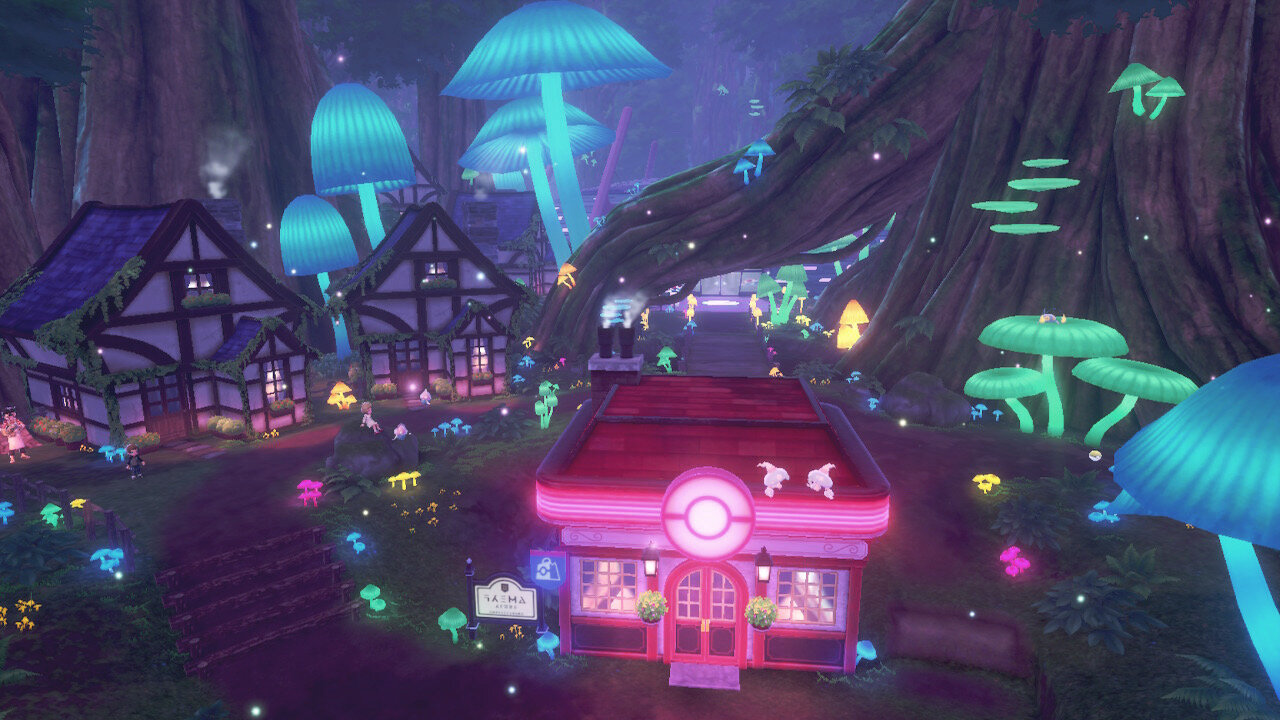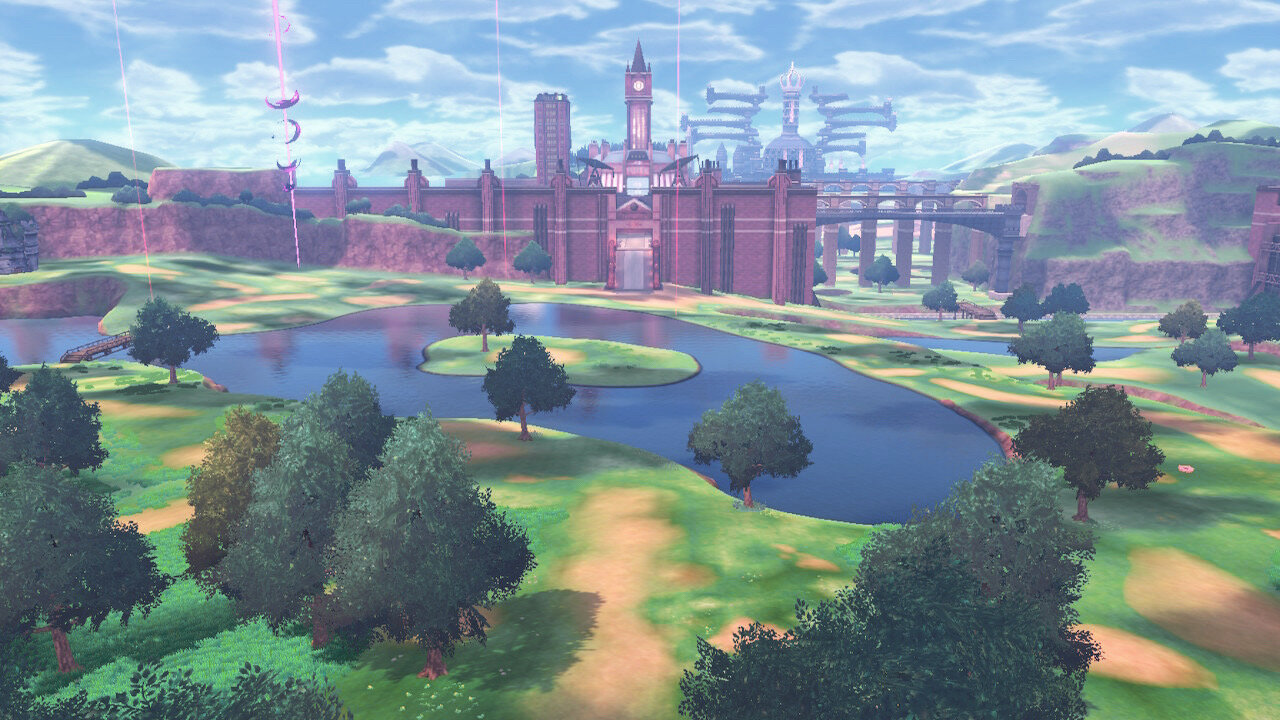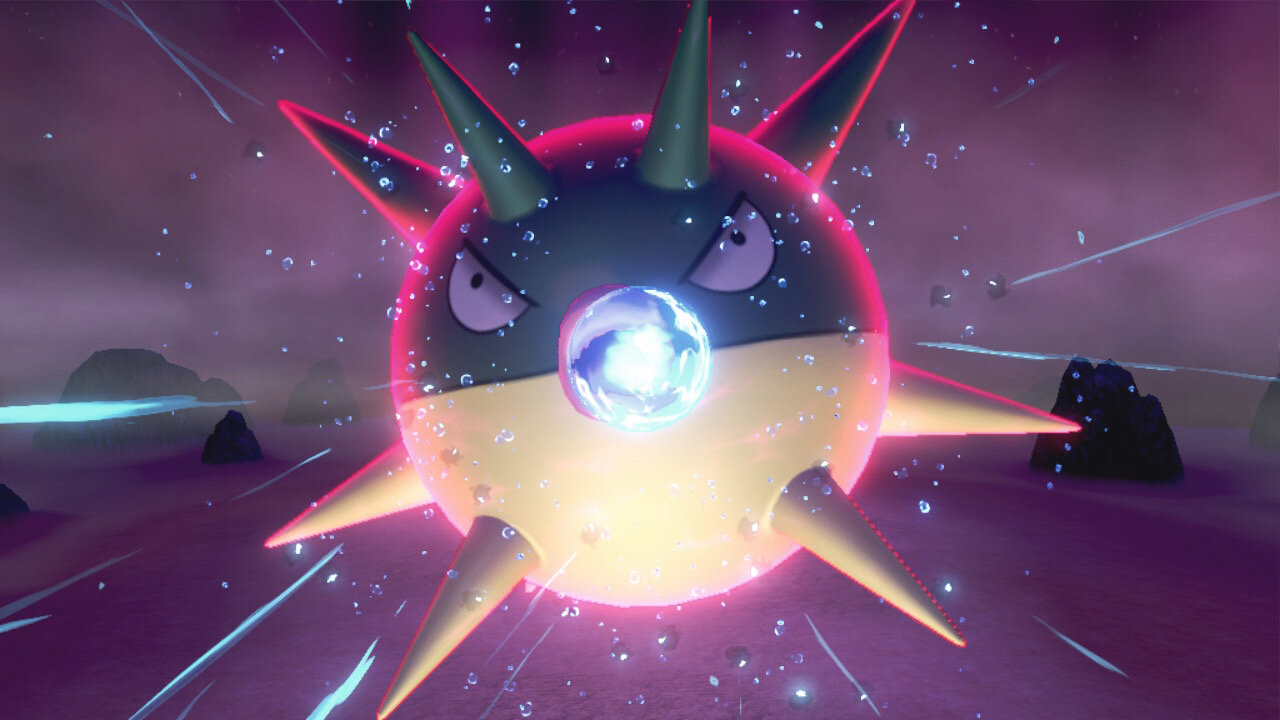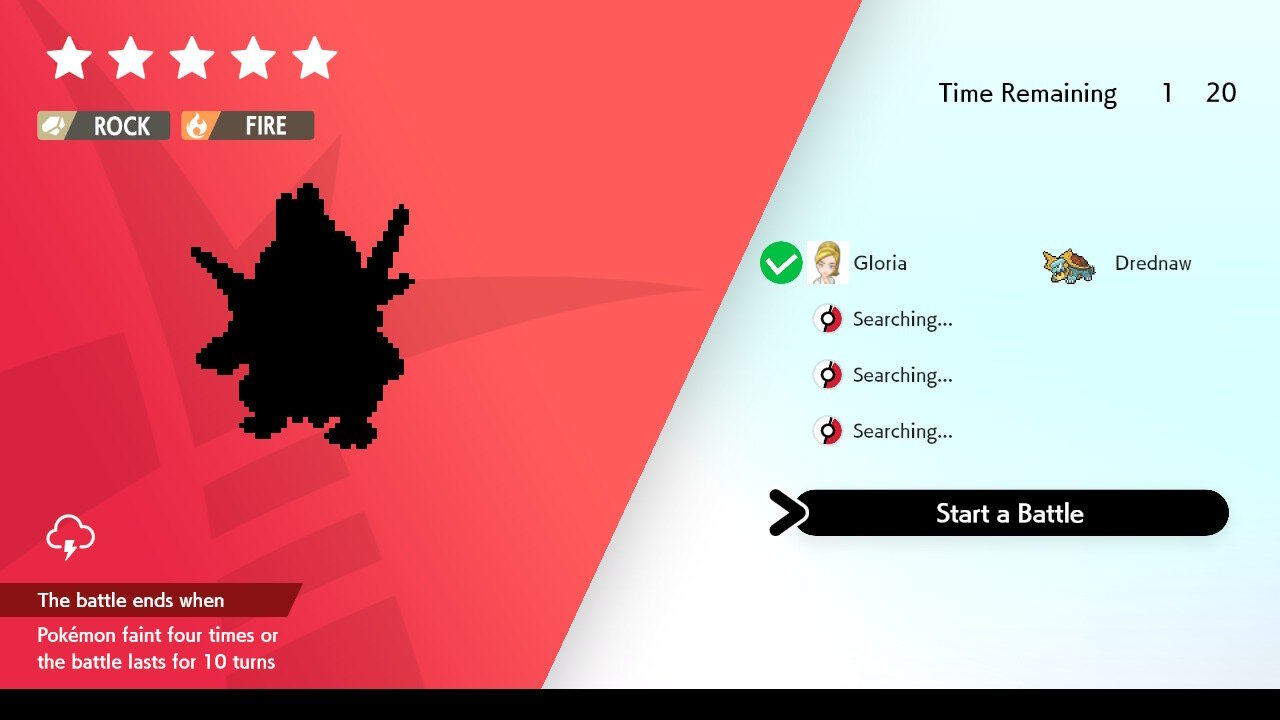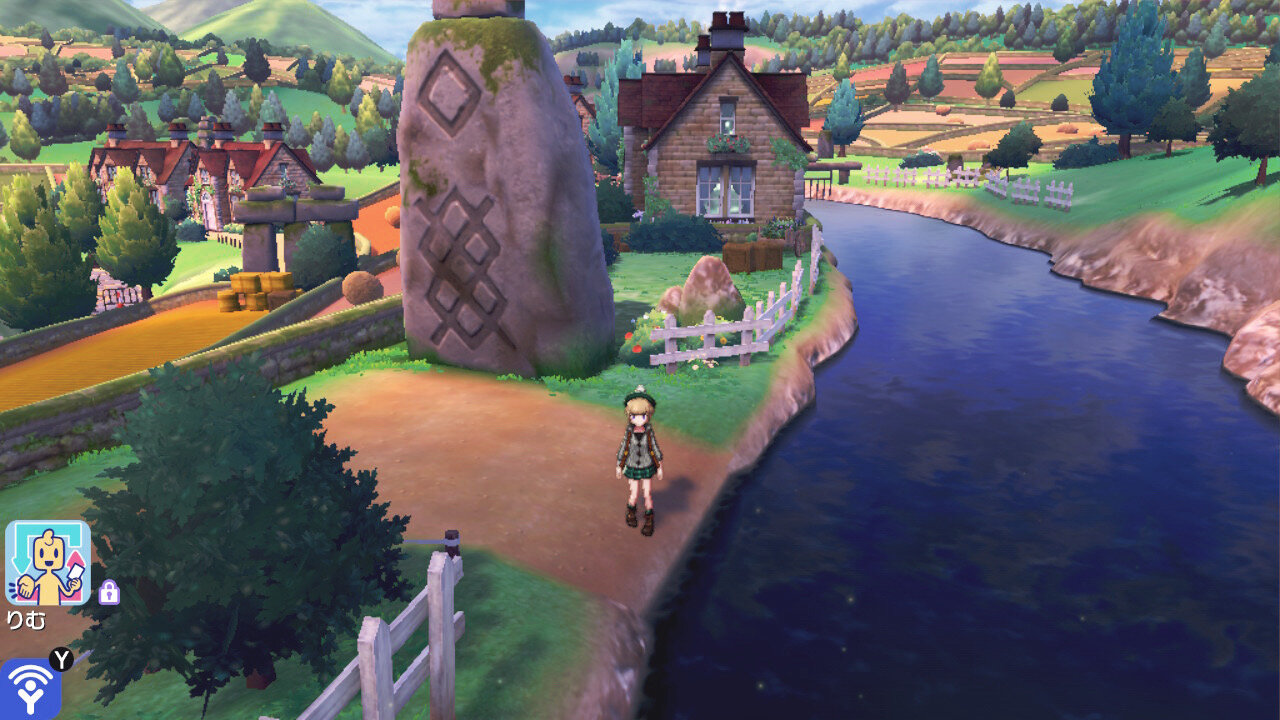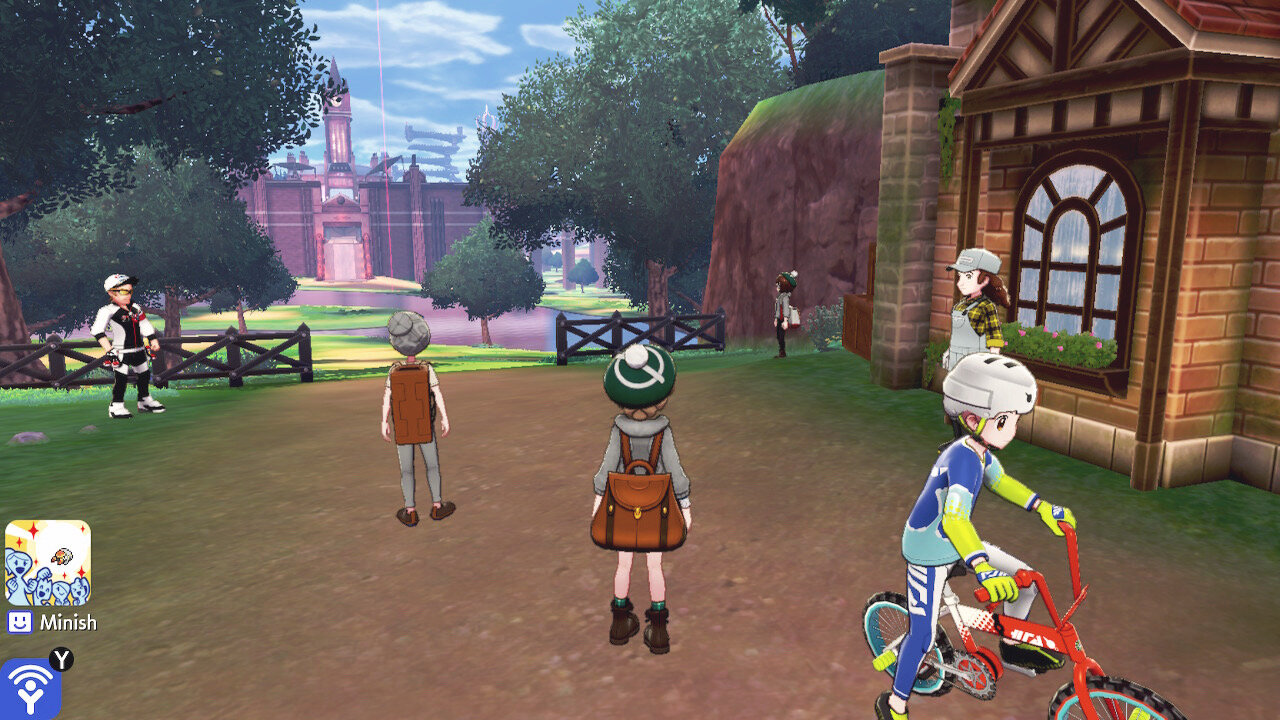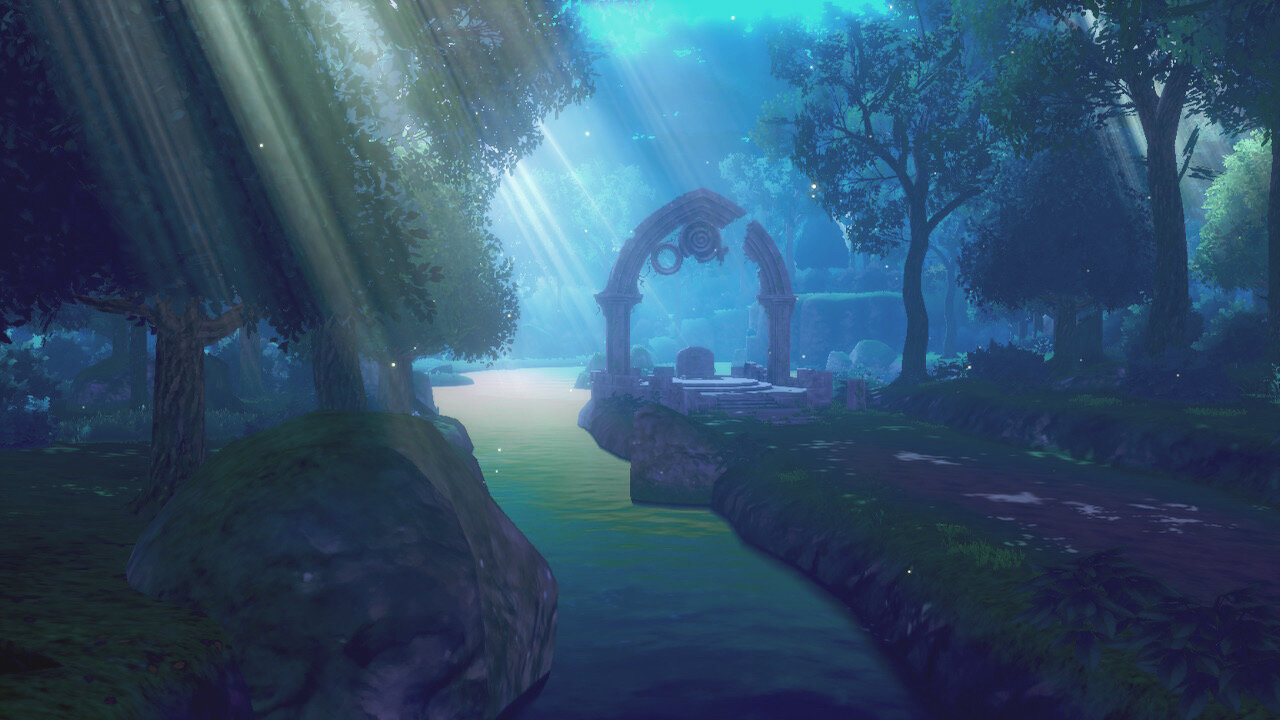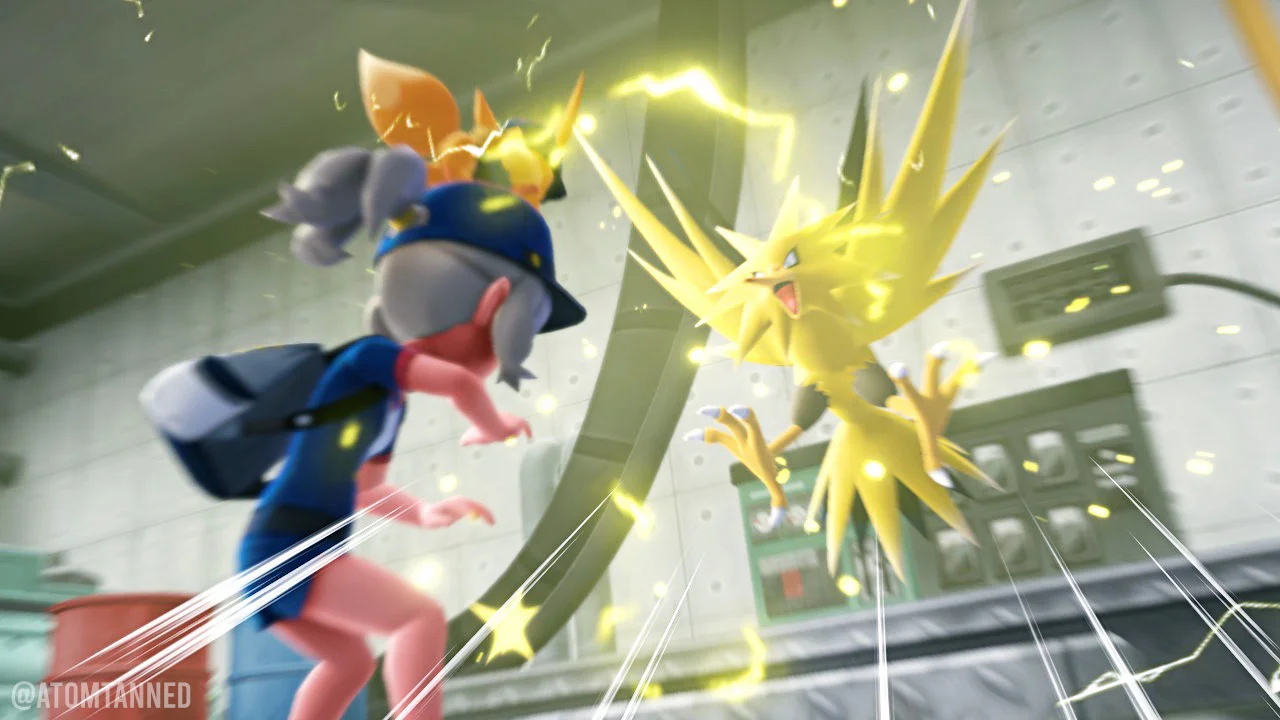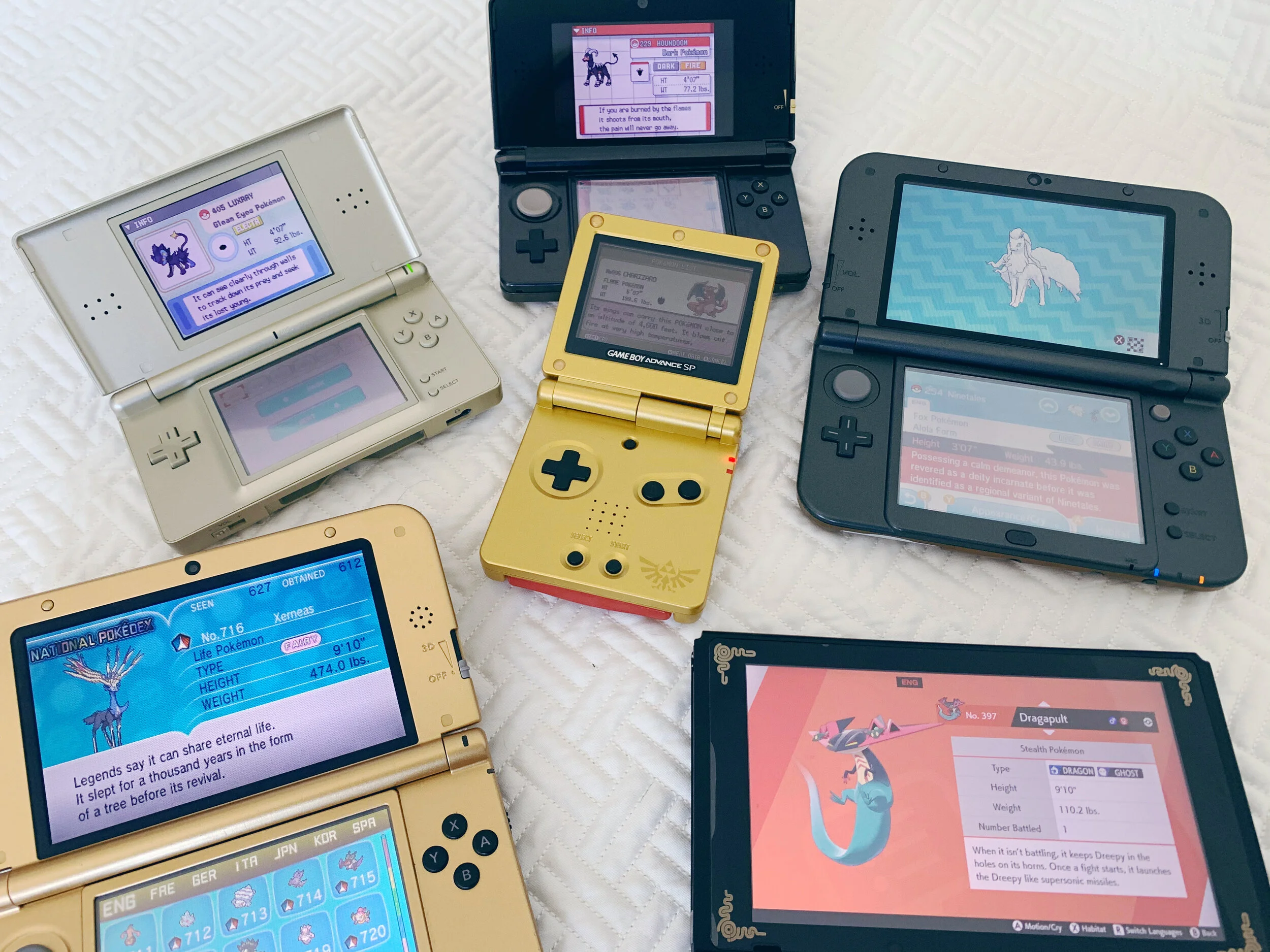REVIEW // Pokémon Sword (Switch)
As a longtime Pokémon enthusiast, I had mixed feelings about the newest releases Sword and Shield when I started playing them. The previews for the game showed off a beautiful environment in what looked like an exciting new region, I loved all the new Pokémon designs that I had seen, and some of the promised gameplay updates seemed awesome. However, the Dexit revelation definitely tempered my excitement a little bit - what would happen to my nearly complete Living Dex sitting in Pokémon Bank? In the end, I loved this game and feel that Sword has taken the franchise in an awesome direction - but I still was bothered by a few of the creative choices Gamefreak made.
This is a VERY long review as there were a ton of little changes to gameplay made in this game, so if you’re also a Pokémon aficionado, get ready for a lengthy read.
As always, this review contains minor spoilers and screenshots.
Storyline
Pokémon Sword follows the now-standard formula for the series pretty closely, although like Sun & Moon there are a few interesting tweaks. You play, as usual, as a trainer from a small town in the new Galar region, based on the UK. Your hometown of Postwick is most famous for being the home of famed regional champion Leon, who is undefeated in league battles at the start of the game. His younger brother Hop is your best friend and rival.
Unlike most games, your adventure starts off with a bang - an encounter with a mysterious legendary Pokémon while you attempt to save a rogue Wooloo from certain danger in the infamous Slumbering Weald. Soon after, equipped with your starter Pokémon, a Pokédex and a Dynamax band to capture the power of the Wishing Stars found in the region, you’re off on a journey to collect 8 badges and participate in the Champion Cup tournament.
As you travel, you learn about the history of the Galar region, including the legend of the Darkest Day - a huge black storm that engulfed the region thousands of years ago. The Darkest Day seems to be the source of Dynamax energy, which allows Pokémon to transform temporarily into giant forms with extra powerful moves.
You’re not the only challenger on the road to the Champion Cup - along with Hop, a few other trainers pop up again and again as you progress through Galar. There’s Bede, a snotty Psychic-type trainer who’s been endorsed for the challenge by the league chairman himself. You also meet Marnie, a trainer from the neglected town of Spikemuth who has her own band of “hooligan” fans, Team Yell.
Oddly, for most of the story there’s no real antagonist - Bede is a brat, and Team Yell frequently stirs up trouble as they try to impede other challengers to help Marnie, but there’s no overarching enemy trying to bring about the destruction of the region. It’s not until the end of the story that you realize there’s a danger lurking, threatening to bring about another Darkest Day.
The story manages to be both nostalgic and fresh, thanks to the new twists on a familiar formula. However, I did feel a little bored sometimes throughout the journey. There’s not really much motivation for most of the game besides getting to the Champion Cup, and while the gym battles are definitely more exciting, it’s just not that compelling after 20+ years of collecting gym badges. The twist at the end is definitely the most exciting part of the story, although by the time it happens it’s also a bit predictable. In the end though, the storyline has never been where the Pokémon series shined.
Design
Graphics have never been a much-lauded part of the series either, and there was a lot of complaining pre-launch about the lack of more advanced graphics. Personally, I loved the look of this game - the designs of the towns and cities were beautiful and detailed, and the giant Wild Area is dynamic and expansive, with sweeping background landscapes showing landmarks and towns off in the distance. None of this is particularly advanced compared to other games, but it’s just so FUN to see a Pokémon game designed this way - it’s one of the positive things they carried forward from the first Switch titles, Let’s Go Pikachu/Eevee. I think the more cartoony style of graphics they’ve used for the past few games is the perfect fit for the series - why fix what isn’t broken?
The new Pokémon designs are also generally pretty excellent, although I am not really a fan of any of the final evolutions for the starters. There are plenty of creative new Pokémon to find, including some unusual typing. Some of my favorites are the Dragon/Ghost Dreepy line, the corgi-esque Yamper, the possessed antique teapot Polteageist (love a good pun for a Pokémon name) and the adorable Appletun, a Grass/Dragon that looks like a pastry. There’s a total of 84 new Pokémon to discover, which is a pretty hefty amount - although it doesn’t quite make up for Dexit, the discovery of new species is always one of my favorite parts of a new Pokémon game.
Gameplay
The vast majority of the updates to the series take place in the gameplay of Sword and Shield, and they’re overwhelmingly positive changes (with a few unforced errors here and there). There are so many small tweaks made to help streamline what has traditionally been a very straightforward and grindy series, and I really appreciated the vast majority of them.
The Wild Area
Sword/Shield carry forward a big improvement from LGPE in the overworld Pokémon encounters. I am so glad they kept this functionality as it was my favorite gameplay change from LGPE. Not only is it more convenient to be able to see a Pokémon before you engage in a battle, it gives so much more life to the routes & Wild Area to have creatures roaming around. I genuinely can’t imagine future games without this mechanic, an especially welcome one in caves and water. Even better, random encounters have also returned, so occasionally you’ll be surprised while running through the tall grass areas. It’s the perfect balance of deliberate and random battles - you’ll be on your toes, but not constantly besieged by Pokémon while trying to get from point A to point B.
Another big change is the level lock on catching wild Pokémon - you’ll be unable to capture creatures beyond a certain level, which is dictated by the number of badges. I found this to be a bit annoying - some of the Wild Area Pokémon you encounter are deliberately beyond your level cap, and if you encounter them before you have the right badges, you physically cannot catch them. I hope for a return to the obedience level cap from previous games instead of being prevented from catching a rare Pokémon.
Max Raid dens are a huge new addition and are a little bit of a mixed bag. They’re a fun way to keep you coming back to the Wild Area, where the dens are located, and they often contain rare or powerful Pokémon, but the battling system can be frustrating. When you enter a Max Raid battle, you have the option to invite other trainers via online connectivity, or are automatically paired with AI trainers by the game. A total of four trainers gang up on the huge Dynamax Pokémon, requiring a group effort to break through the defensive barriers the Dynamax monster throws up before allowing a single catch attempt. Your team’s Pokémon will revive periodically if they faint, but after four total faints, the battle is over and the Dynamax Pokemon flings you all out of its lair. I’ll talk a bit more about the online play option later, but as someone who frequently plays on airplanes, the Max Raid battles are AWFUL if you’re stuck using AI trainers. They frequently bring a Pokémon with a type disadvantage, make poor decisions during critical turns in battle, and generally just get in the way most of the time, especially once you’re able to fight high-level raid dens. AI has always been a massive weak spot in the Pokémon series, and when you’re stuck with these losers on your team, it can be almost impossible to successfully win a Max Raid.
The Dynamax/Gigantamax mechanic is another aspect that’s hit or miss. Visually, these supersized Pokémon are pretty cool, but their functionality is fairly shallow and limited. Their moves are reduced to a single move for each type, and their supersize form, along with the strength and power it brings, only lasts for four turns. The weakness of these forms is really evident in the gym battles. Each gym leader will wait to Dynamax their Pokémon until the very last member of their team - but you can Dynamax at any time. With a type advantage, it’s simple to just Dynamax at the very beginning and one-hit their entire party, which is pretty lame. I elected not to do that, as Pokémon games are easy enough, but it’s another example of crappy AI making this functionality sort of pointless. Some Pokémon have the ability to use a special Dynamax form called Gigantamax, which adds visual changes to the Pokémon itself along with giving it access to a special, form-specific move. But Gigantamaxing suffers from the same limitations as Dynamaxing, so aside from the collectability element, there’s not really a huge advantage to these forms in-game, since the AI just doesn’t have the capability to use or counter them well.
The Dynamax/Gigantamax forms feel even more disappointing due to the absence of one of the best battle mechanics of the series, Mega Evolution. Mega Evolution, introduced in X & Y, was such a cool functionality that made some previously competitively useless Pokémon into powerhouses through temporary “evolutions” that lasted for the duration of the battle. Dynamaxing feels like an inferior spinoff of this functionality, and I really wish they hadn’t removed Mega Evolution. The Z-Moves from Sun & Moon have also been removed, but these weren’t nearly as fun or cool as Mega Evolution, so that’s kind of whatever.
Gym Battles
Sword and Shield’s gym system is both a return to tradition with the badge collection and an update of Sun & Moon’s trial experience. Each gym in the region requires you to complete a special challenge before you are able to battle the gym leader. These challenges are typically a minigame or puzzle for the player to solve - none are particularly difficult, but they do at least add a little variety to the otherwise typical gym format. Another welcome addition to the gym battles is the stadium atmosphere - for the first time in a Pokémon game, the gym battles feel pretty high stakes. They take place in enormous arenas with a roaring crowd, cementing the feeling that gym battles are a true sport in the Galar region. Dramatic music and crowd reactions heighten the experience and do make you feel like a real champion when you’ve won. The stadiums are also the best showcase for your Dynamax Pokémon, and despite the limitations of this mechanic, it IS admittedly pretty cool to watch your Pokémon suddenly become massive and fill the whole stadium.
The Champion Cup at the end has replaced the standard Elite 4 gauntlet, which is another awesome change. Instead of battling a cadre of random powerful trainers no one seems to have heard of, you end up in an actual tournament to see who has the privilege of challenging the reining champ, Leon. This tournament gives a lot more depth to the gym system - it makes you feel like the gym leaders truly are local celebrities, and you understand why everyone in the region is so obsessed with Leon.
Training & Other Mechanics
Training has always been a hassle in Pokémon, but Sword & Shield do their best to take frustration away. EXP can still be gained through catching or defeating wild Pokémon as well as trainer fights, but there are new EXP candies to reduce the grind. Max Raid Pokémon drop these candies alongside the much beloved Rare Candies when they are defeated or caught, allowing you to quickly level up Pokémon with no effort at all. This was a fantastic addition to the game - it allowed me to adjust my team on the fly if I decided I wanted to use a new team member, create type-specific teams for the gym battles, and fill my Pokédex quickly. There’s also an always-on EXP share, which was both useful and annoying in turn. In past games I was constantly forgetting to turn off or on my EXP share, so it’s helpful to keep your main team at a relatively consistent level, but was irritating when trying to focus on leveling up one specific Pokémon.
There are other new items to help simplify your team building process, including Feathers, which allow you to adjust IVs and Mints to change an undesired nature. While some players might be angered by the ease in which people can build a perfect team, I think this is a huge improvement and one that will make competitive play much more accessible to people who just don’t have the time to breed and train perfect Pokémon. I don’t play competitively, so don’t personally have much use for these items, but the ease in which you can improve your team is nice.
Another option to help you level up your team is the new job system, which allows you to send off your Pokémon on little missions for companies in the Galar region. I didn’t use this system too much - you don’t get to control your Pokémon’s move set or evolution when they get job experience, and in order to get any decent amount of EXP they need to be gone for a fairly long time (8+ hours real time). You do get items and cash as well, so it’s another avenue to bolster your team or wallet with no effort required.
One other huge improvement is the ability to access your Boxes from anywhere, at any time. Another holdover from LGPE, it’s been improved this time around since it’s a fully functional Box system instead of the single giant, messy Box in LGPE. Like EXP candies, this makes for the ability to change or adjust your team on the fly, and I found myself using a much bigger variety of team members as I traveled through Galar.
You also have the ability to heal anywhere, thanks to the new Camping functionality. While in the Wild Area or on a route, you can set up a little campsite and play with your Pokémon or cook curries that restore health and even PP sometimes. Honestly, camping feels a little slapdash - there’s not much to do except mindlessly throw a ball to your Pokémon or play a little Cooking Mama style minigame to make the curry, but it is useful to feed your team curries as it fully restores HP and builds their friendship level with you. If you use the right ingredients and cooking techniques, you can even gain EXP or restore PP as well. Apparently you can interact with other trainers’ camps as well if you’re online, but you only can encounter these camps in the Wild Area and I didn’t really see many of them.
One last note that I haven’t seen discussed much - it seemed to me like the capture rate in these games was adjusted pretty drastically from past games. In the beginning, I found myself surprised (and more than a little annoyed) when I’d have to use a Great Ball or a ton of Pokéballs on a relatively low-level Pokémon. You don’t get access to better performing Pokéballs until much later in the game, so I found myself having to purchase WAY more Pokéballs than usual, and I also needed to heal pretty frequently because my poor team members would end up getting pummeled while I spammed Pokéballs at an enemy with just a sliver of health left. Once I could use better options like Dusk Balls & Quick Balls, this became much less of an issue, but I did find it incredibly annoying early game.
Dexit
The much maligned decision to eliminate certain Pokémon from the game still stands as a really odd choice for me. One of the most interesting and unique elements of the series was always the ability to carry past teams forward into new games, and in the past such an emphasis has been put on this that it’s a little jarring to have that capability suddenly taken away. There’s just really no reason for it, and for those of us who have been collecting Pokémon for years, it’s definitely still disappointing. While we’ve learned that the upcoming DLC will add back in some of these creatures, there still really seems to be no reason to take away players’ ability to have their whole collection with them in Galar. That being said, I always restrict myself to using a region’s new Pokémon in my first playthrough anyways, so I wasn’t really impacted at all by the missing monsters.
Online Play
Online play is facilitated entirely through the Y-Comm, which is a menu available to you at any time during the game. Thanks to this functionality, you can trade Pokémon, battle, or enter Max Raids with other players at any time, even while you’re physically standing in a Pokémon Center. Like most first-party Nintendo games (and indeed, all other Pokémon games), there’s some frustrating decisions made around connecting with others. Still no easy way to directly trade or battle with your Switch friends list, everything once again relies on codes, forcing you to interact offline with people to set up your trades, battles or raids. The GTS (global trade system) has been removed from the game completely and pushed to Pokémon Home, so you can’t search for specific Pokémon in game, which is annoying. However, Surprise Trades (previously Wonder Trades) are back, which is always fun.
Thanks to the Max Raid dens, there’s a whole new reason to connect with other trainers in Galar, and it’s definitely a cool addition. The raids, so frustrating with AI, become really fun when you’ve got three other actual players as companions. Alongside trainer customization and the nickname system, it’s neat to see the personalities of the people you’re fighting alongside come to life. And of course, the Max Raids are a perfect way to show off your favorite Pokémon without having to actually fight against anyone. One thing I love about the Max Raid system is that you can join players who have a different game version than you, meaning I could catch Shield-exclusive Pokémon while playing in Sword.
However, the worst thing about the Y-Comm is that it’s slow and a little buggy. You can see other players seeking trades, battles or raids through “stamps” that appear on the screen as you play, prompting you to open the Y-Comm and attempt to join them. But the stamps just don’t refresh or load fast enough - by the time I opened Y-Comm to join, most of the raids were closed or full. This is exacerbated by a date glitch that allows people to infinitely reset a den until they see a Pokémon they want - the glitch requires you to seek other players before exiting the game, changing the system date, and then closing the raid. It’s actually a super useful glitch that can be used offline, but since the raid system is plagued by people resetting dens online, it’s incredibly difficult to actually join someone else’s raid. Even worse, I frequently found myself searching for other players to join my own raids with no luck, forcing me to take on raids solo or with only one other player (and the stupid AI). The system has so much potential but just doesn’t work all that well, so I hope that’s improved on because it’s one of the cooler options in the game.
Postgame
Pokémon games are hit or miss typically on postgame activities, but Sword & Shield definitely have a lot of life left after completing the main story. Immediately following the credits, you have the option to play through another short story that further explains the origins of Dynamax energy. It’s nothing groundbreaking, but it was an extra couple hours of battle and gameplay with some additional lore to boot. Definitely would have been annoying to have as part of the main storyline, so it was a good addition to the postgame.
Of course, there are always Pokémon to catch and plenty of Max Raid battles to fight, but there’s also a Battle Tower featuring Single and Double ranked battles. Each battle type has six tiers of difficulty, and there are some awesome prizes for reaching Master Ball tier in either category. You also gain BP as you win, which can be used to purchase rare or useful items. I haven’t actually tried out the Battle Tower yet, but it also apparently allows players to rent well-trained, balanced teams in case you don’t want to spend time on training. Apparently it’s pretty challenging, so I look forward to trying it out soon.
There’s also the addition of DLC for the first time in Pokémon history! I know some people were worried about this, but the DLC looks really exciting and I’m looking forward to it. Time will tell if these extra episodes are worth a full $30, but I think it’s actually better than the previous Pokémon formula of rereleasing full games with extra content added on. I’ll be sure to do a mini review on the DLC once it’s out later this year.
Rating
Given the prerelease anger and backlash around these games, I was pretty apprehensive when I started my Galar region journey. I was pleasantly surprised - I really enjoyed Pokémon Sword a lot. While not my favorite game in the series by any stretch, the streamlined functionality takes away so much of the worst elements of the series, to the point that I do think it may be hard to go back and replay older titles. It’s a little disappointing that they removed some fan-favorite features like Mega Evolution and a full Pokédex, I definitely wish the story was a little more interesting, and I will never stop wishing for better AI/difficulty levels in a Pokémon game, but Sword has laid out some incredibly solid foundations for the future of the series. I hope that future titles build on its successes while bringing back some of the most beloved parts of the past.
